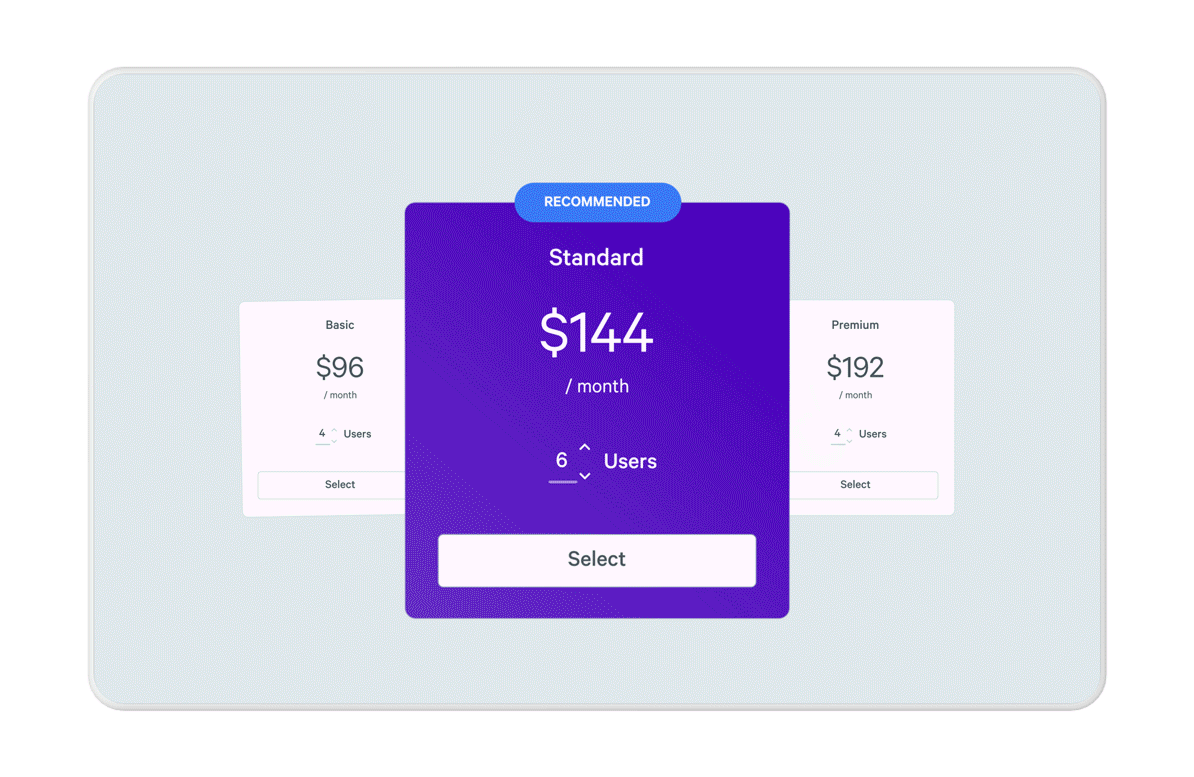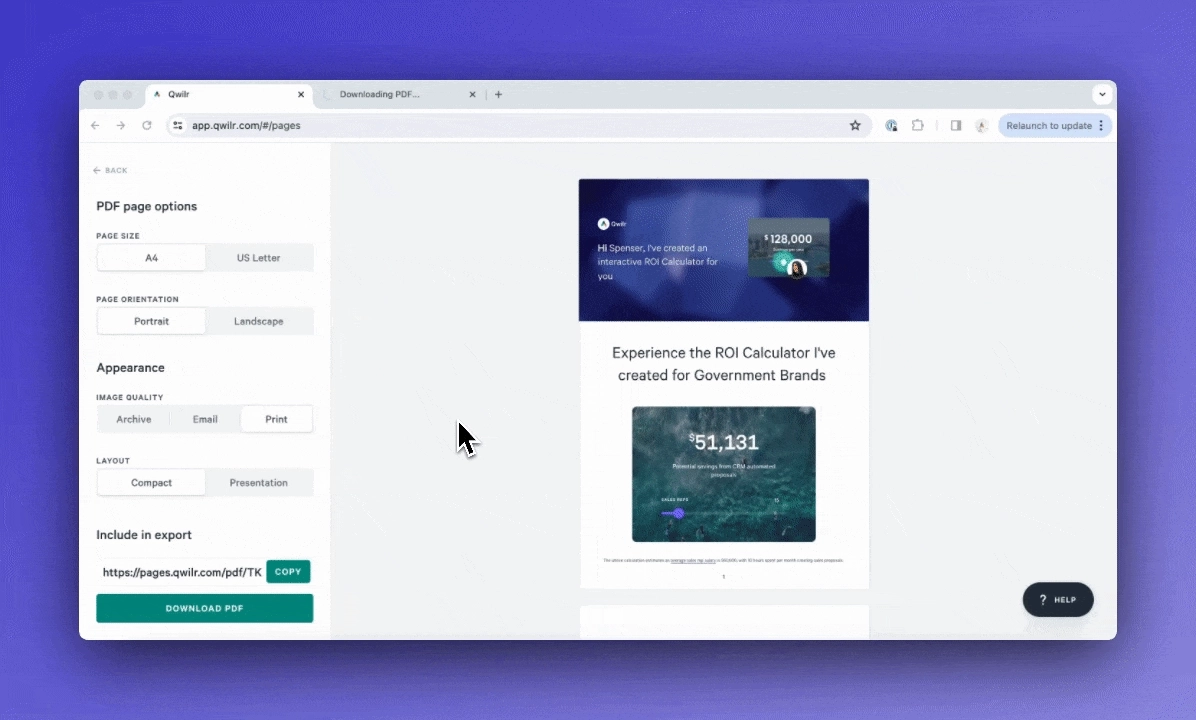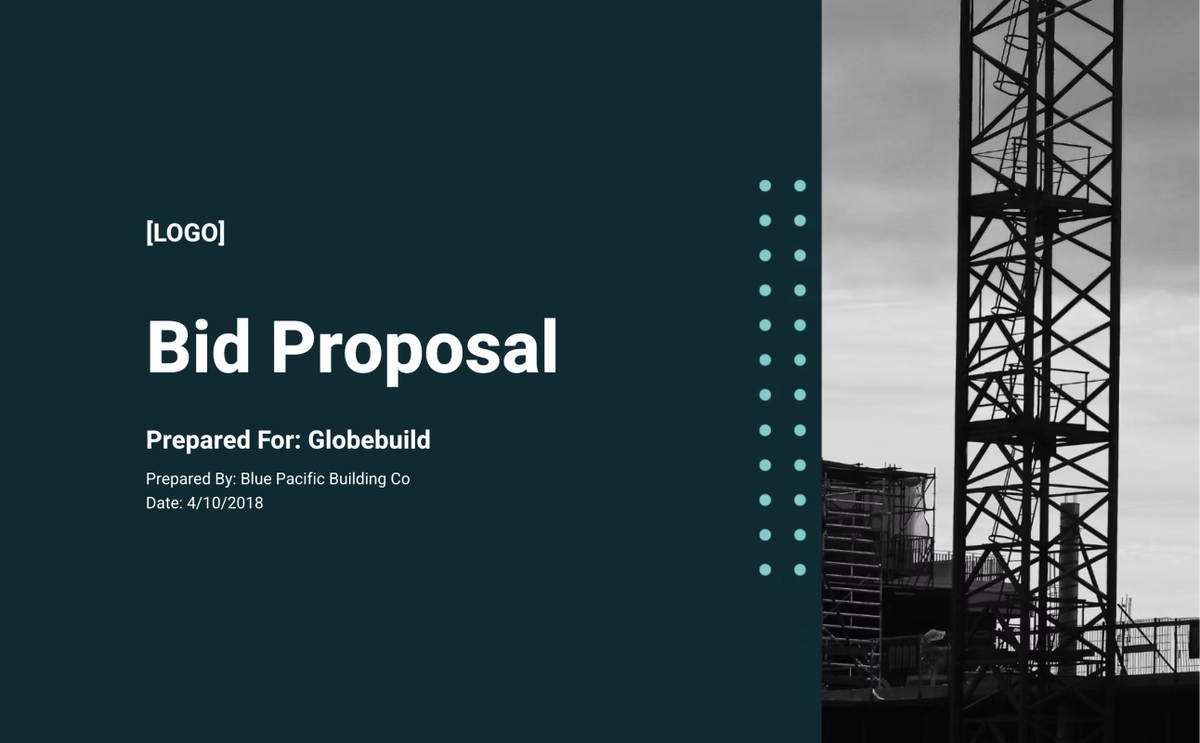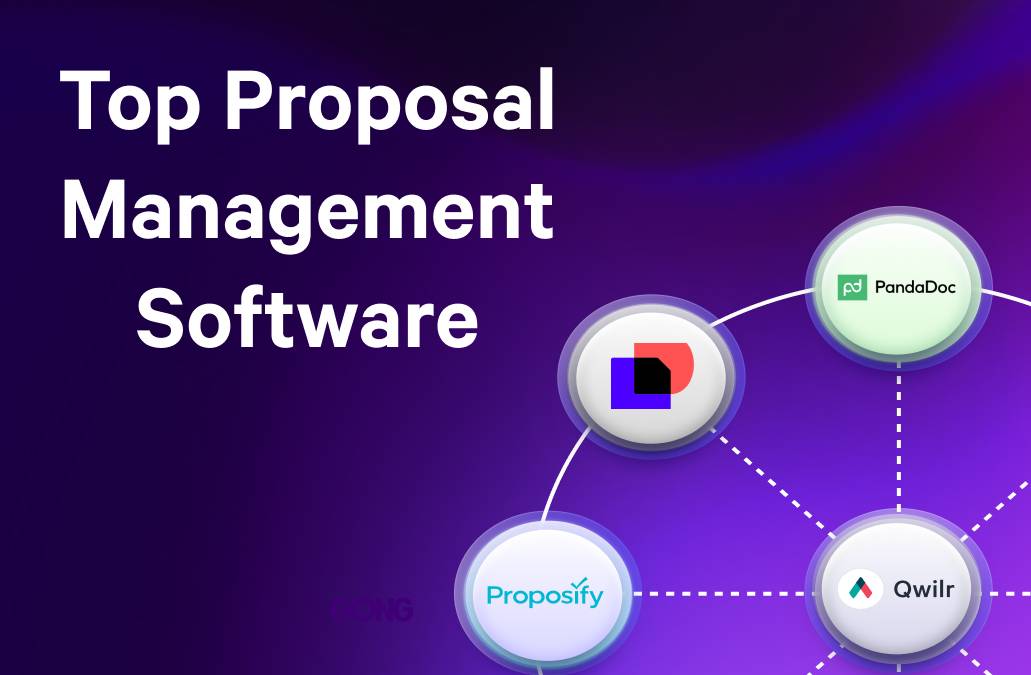If you haven’t figured this out by now, the lowest bid is not always the one that wins. In fact, the lowest bid only wins 36% of the time. That means that more than half the time a company or government body considers bids, they’re making their choice based on something else. But what is that something else? That’s where a great RFP response comes in.
To get your bids noticed and considered, you’ll want to learn how to write an RFP response that wins contracts. Qwilr is here to help. We’ve even got a template to help get you started.
Key takeaways
- An RFP response is a proposal that directly addresses a company’s request.
- An RFP response should include a persuasive cover letter, an executive summary, pricing details, and a timeline.
- Keep your RFP response interactive so the client can communicate with you and engage with your pricing, timelines, and signature lines.
- Your best bet is to work with a template that allows you to maintain brand integrity while also impressing your potential client with your professionalism.
What is a Request for Proposal (RFP) response?
A request for proposal (RFP) response is a proposal you send to a company to bid on a project that responds to the company’s specific parameters. The RFP will include a cover letter, executive summary, deliverables, pricing, social proof (i.e., case studies), additional product information, and contract terms.
At this point in the bidding process, the company with the project is already considering you, among other companies, to fulfill the contract. Now, the project managers want to see how well you can outline your plan for the project.
How to write a response to an RFP and what to include
Creating a response to a Request for Proposal (RFP) involves presenting your strengths while matching your services with the client's needs. The goal is to craft a compelling proposal that not only showcases your expertise but also clearly outlines your plan to deliver value. Here’s how to do that:
Compose a persuasive cover letter
Your prospective client will first see your cover letter when your proposal arrives, so you want to make it great. How do you do that? Start with a professional greeting and introduce yourself
If you have an impressive background, be sure to include it. You could say something like, “We’ve completed over a dozen successful projects similar to this one, and we’re looking forward to helping you meet your goals.” You can get more tips on how to structure a proposal cover page here.
Next, make sure you mention how you plan to complete this project at a high level. What are your value propositions? How do they connect to the client’s needs?
Include an executive summary
Your proposal letter will lead into a 1-4 page overview that provides the main points of your proposal. This executive summary will allow the client to glance at it and either get excited and want more or lose interest and decide not to read the rest of your proposal.
Of course, you’re aiming for the first option, which is why you’ll want to structure your proposal to win more business.
In your executive summary, be sure to include:
- An Introduction: This can be a single paragraph providing an overview of the executive summary. It should also include a “Why partner with us?” section that reveals what’s great about your company and why this project matters to you.
- Your Objectives: These are the specific goals you plan to hit with your project.
- Your Findings: This section includes an overview of the data you’ve collected to back up your objectives.
- Your Recommendations: Here, you’ll explain why your plan will work and how you and the client can work together to achieve these goals.
- A Conclusion: Wrap up your executive summary by inviting the client to read the proposal for more details, including a reasonable timeline and pricing.
Outline your implementation plan and deliverables
The first official page of your proposal is the section where you’ll dive into your objectives. Here, you’ll provide a complete description of the project. You’ll walk the client through the transition from a blueprint to a thriving reality.
Outline for the client what the problem is, what is happening, and clear indications as to how your company provides the materials and services necessary. Then, explain why the project should be done in the way you describe, drawing on your expertise and past successes that show measurable results.
Finish this section with specific deliverables your client can expect to see as you progress through the project.
Breakdown pricing and contract terms
Now that you’ve outlined the project with metrics and deliverables, it’s time to talk pricing.
You’ve already shown the client that you’re valuable, that your company should be chosen to work with, and that you’ve got a reputation for greatness they can count on.
It's time to put a dollar amount on that value.
It’s up to you to decide if you want to charge one lump sum or if you want to break down the project into segments, allowing the client to make payments along the way.

Easily embed interactive pricing tables and quote blocks with Qwillr’s smart proposal editor
Highlight case studies and social proof
73% of the most successful content marketers used case studies, so of course you’ll want to include yours. The case studies section backs up your claims that you know how to effectively approach the project and deliver results.n
Provide examples of past and present clients you’ve worked with, what the problem was, what objectives you had, how you delivered, and what the result was.
You can also include reviews and testimonials from past and current clients to give the potential client word-of-mouth social proof.
Include additional product information
A more thorough “projects and services” section can include a more in-depth look at what specific products or materials you’ll be using to complete the project as well as what types of services you’ll be providing that the client might not have thought of.
You could have bullet points with specific steps and the materials and products needed to implement that step.
Broach partnership contract terms
Finally, wrap up your proposal with the terms of your contract, which will include:
- Payment Terms
- Warranties or Guarantees
- Liabilities and Risk Management
- Termination Clause
- Legal Jurisdiction (governing laws that will apply if any disputes arise)
You’ll close the proposal with signature fields so your client can seal the deal. Qwilr’s RFP proposal template allows you to insert e-signature lines for the client, your company, and date fields.

Remove extra steps from your sales process by integrating e-signature functionality into your proposals with just a few clicks.
How to respond to an RFP: Best practices & process
Before you get started on your proposal, of course, there are a few things to consider. Take your time reading the request, understanding the project, and doing your due diligence to get ready to make a proposal. Here are a few practices and the process you’ll follow:
Conduct an initial evaluation
Take the time to evaluate the project. Look into the company. Do you want to partner with this organization? The answer to this question can have a huge impact on the project. Consider if this company has a reputation for being difficult to work with or failure to pay. Also, consider what future business this project might bring in.
Customize, don’t generalize
Next, get specific with your proposal outline. As you begin to draft a rough proposal, customize each section for this project, with this company, and how your company can have an impact. You never want to take a cookie-cutter approach to clients that will make them feel less valued or make you bored with the work.
Map out a realistic timeline
Get real when it comes to your timeline. Take things like outsourced partners, delays in shipping, permitting, and any other factors that might cause the timeline to be extended into consideration now. You’re much better off underestimating how quickly you can get something done than overpromising and falling short.

Ditch the PDFs and opt for engaging proposals that clearly communicate your offerings.
Identify key decision-makers and stakeholders
Just like when you decide if you want to work with a company, you’ll need to figure out who you’ll be working with throughout this project. Identify the decision-makers, who will be providing approvals and funding, and who might block your progress as you work on the project.
You’ll want to know the power players up front so you know who to speak to and how, and you can decide what it will be like to work with them.
Send interactive responses
When you’re ready to get started, make sure the client is, too. Send an interactive response that allows for communication, rather than a PDF that can easily get lost in the email inbox. As Michael Hines from Demand Management, Inc. notes, you must “Establish great rapport and set standards and expectations from the start. Check in frequently, and never underestimate face-to-face meetings and phone calls as they are still the best way to build rapport.”
To that end, an interactive proposal is engaging, allowing the client to buy into the process, and allowing you the opportunity to track whether the client opened the proposal, how many times they’ve read through it, and if they’ve signed it.
An interactive response is a key element of a bid proposal that wins more projects.
Anticipate questions
Before you sit down to draft the proposal, consider the project and your rough draft from all angles. Anticipating questions ahead of time will ensure you draft a thorough proposal that answers your client’s questions in advance. This will show that you really care about the client’s concerns and needs.
You can meet with your project team, review past projects, or submit a rough draft to your supervisor before moving forward to help get the juices flowing.
Prove your value
Before you hit send on your proposal, double-check that it highlights your measurable value. Tie the project directly to what your company is providing that the competition simply cannot match. Whatever makes your company and your team great must be included in your proposal.
To drive home what makes your team the best choice, include quantifiable proof of your strengths:
- Results you’ve gotten in the past (i.e., project metrics, completion rates, or measurable outcomes that reflect your previous successes)
- Years of industry-relevant experience
- Awards or recognitions
- Unique methodologies
- Special skills you bring to the table
Conduct quality assurance and compliance check
Then, as you work through the project, make sure you’re proving that value along the way. Hold regular reviews of your team’s progress. Meet with the client to ensure they’re satisfied with the way the project is going. And perform compliance checks at regular intervals.
This part of the process will help solidify your reputation as one of the best in your industry.
Request for Proposal (RFP) template
If you’re ready to get started with your RFP response, Qwilr offers a template that has everything you need to wow your client and win more bids.
You can customize it to your logo, your colors, and even your fonts, and it guides you through each step of the process. You can include an ROI calculator, so the client will see exactly what value they’re getting by working with you.
You can also include spaces for e-signatures and quotes and payments.
You can even include an interactive pricing model so the client can see how you compare to your competitors.
The RFP response template by Qwilr streamlines your proposal process and makes it easy for your potential clients to work and communicate with you.
Demonstrate your expertise with Qwilr
Make your proposals stand out and win more bids with Qwilr’s RFP response template. From interactive features to brand customization, Qwilr simplifies the process so you can focus on impressing clients.
Sign up for your free Qwilr account today and see for yourself how it can transform your proposal game.
About the author

Brendan Connaughton|Head of Growth Marketing
Brendan heads up growth marketing and demand generation at Qwilr, overseeing performance marketing, SEO, and lifecycle initiatives. Brendan has been instrumental in developing go-to-market functions for a number of high-growth startups and challenger brands.


